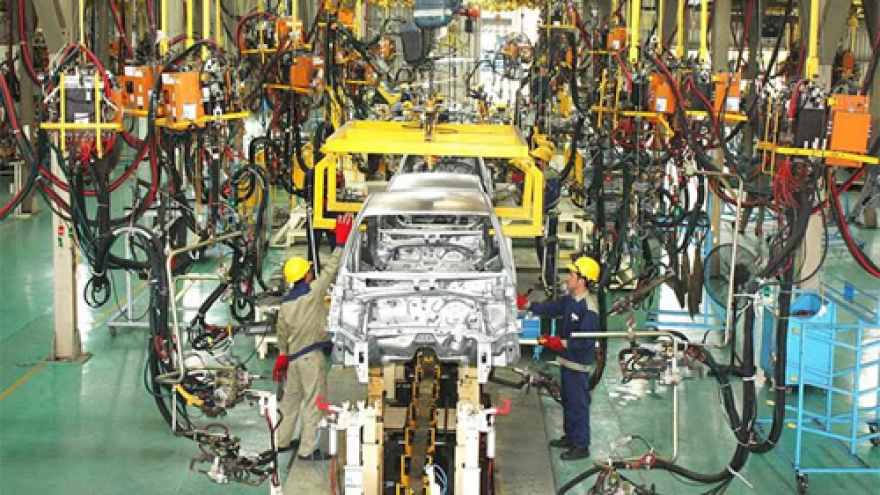Auto industry has low ratio of local content
The ratio of local content in automobiles assembled in the country is far lower than the Government’s targets despite a lot of policy incentives for the industry, according to a Ministry of Industry and Trade report.
 |
Local content makes up 7-10% of the value of cars under nine seats though the Government targeted 40% for 2005 and 60% for 2010, says the report which is on the ministry’s website.
A small number of manufacturers have increased localization. Thaco has local content of 15-18% and Toyota’s Innova cars are 37% locally made.
The industry has seen more enterprises getting involved in auto supporting industries but they make simple parts such as glass, electrical wires, batteries, tires and plastic items. Just a few auto parts producers have invested in modern production lines.
Auto manufacturers and parts suppliers lack a linkage. The report says the industry has no large-scale parts makers and suppliers.
At a Q&A session with National Assembly deputies recently, Minister of Industry and Trade Tran Tuan Anh attributed the low localization ratio for passenger vehicles under nine seats to the low development level of the industry, saying Vietnam is lagging behind regional countries such as Thailand, Indonesia and Malaysia.
Big automakers have already set foot in other regional nations with their output meeting consumer demand in the entire region.
Meanwhile, trucks and commercial vehicles have nearly met the localization goals because they are rarely changed in design and mainly used for business and production purposes and because importers enjoy no tax incentives. Therefore, local manufacturers of these types of vehicle are still competitive, Anh said.
Supporting industries for auto manufacturers have remained underdeveloped, the ministry said, since the size of the market is small, with 200,000 to 300,000 units sold a year, while there are 56 big auto assembly and manufacturing companies.
Therefore, each firm holds an insignificant market share.
Auto firms still rely on foreign suppliers of basic materials such as steel, plastics and rubber.
Meanwhile, supporting industries get little or no attention from vehicle assemblers.
Therefore, the ministry suggested offering new tax incentives, developing infrastructure and facilitating technology transfer to develop the auto sector.


